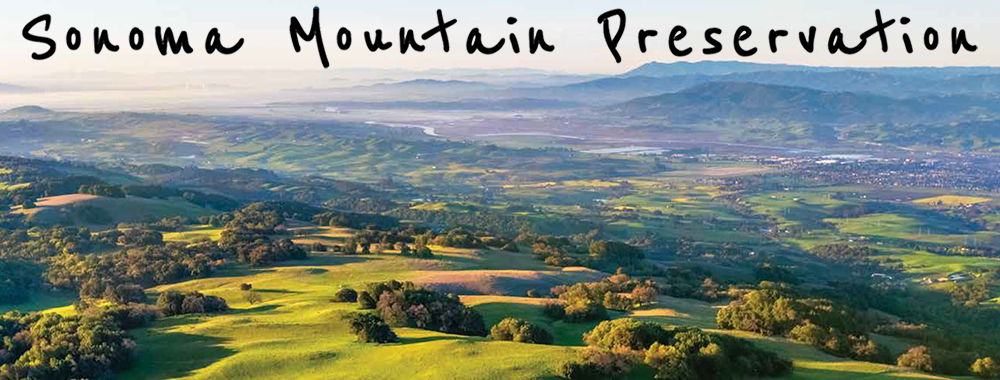Meet Anais Morris, one of our newest board members.
This is part of a series of interviews we are conducting with the Sonoma Mountain Preservation (SMP) board members.

Anais uses her background in sustainable development policy and ethnomusicology to build bridges and increase capacity in communities and ecosystems. Her work focuses on natural resources and the effects of climate change. She has managed environmental programs for the Cities of Calistoga and San Rafael as well as non-profit organizations in the North Bay to mitigate and adapt to climate change. Anais holds an MA in International Policy from the Middlebury Institute of International Studies and a BA in Ethnomusicology from UCLA.
What are your first memories of Sonoma Mountain?
I used to commute from Novato to Santa Rosa, and as I approached Petaluma, I would see the mountain rise in front of me. It was the large landform that stuck out to me, and it meant I had reached Sonoma County. I didn’t know what it was, but I always equated it with the welcome committee to Sonoma County. When I moved to Santa Rosa about 14 years ago, I visited all the parks to get to know the land. Jack London State Historic Park was one of my first.
How and when did you join the SMP board?
I got to know Arthur through my work in the Mayacamas Mountains and in collaboration with Pepperwood Preserve. I see myself as an environmental anthropologist, and the way he did his work, by looking at newspapers and old clippings to understand how people engaged with the land, piqued my interest. He seemed to have an anthropology background, and I wanted to see how he came to his path. Then he asked me if I wanted to join the board. This is my first board. I am seeing how I can help with advocacy and learn from those with more experience.
What is your role as an SMP board member and what do you hope for the future of SMP?
I provide advocacy support and learn from members who know the area and have wisdom to share. After a few meetings, it seemed somewhat loose and could possibly benefit from a more traditional nonprofit structure. What are ways they could do things more efficiently? With advocacy, I am looking into how SMP can influence policy changes with land and conservation easements so there is more public access.
As a new member, I am learning what has been done in the past and what would be the plan going forward.
Do you have a favorite story about Sonoma Mountain?
After they opened North Sonoma Mountain Park, I went with a group of friends and took my son in an ergo baby carrier. We hiked from the parking lot.
I didn’t realize how far we were going, but we ended up going to the very top, to where the trail connected to the Jack London State Historic Park. My son got really heavy really fast in the sun, walking up hill. I was struggling. However, my friends were there to help by carrying him. When we got to the top it was so lovely, and the forest was so comfortable. It was an awesome transition from hot and straining to cool with beautiful surroundings. We relaxed together in the higher regions.
What do you do when you aren’t acting as board member of SMP?
I’ve got a lot on my plate. I work full-time for the parks department in the natural resources division, and part-time with Regenerative Forest Solutions on the Mayacamas project. The rest of my time I spend with my kids, who are 6 and 8 years old. They love to go out. They always want to go hiking, biking, or to the beach. I enjoy it, but sometimes I just want to sit down. I am planning to take the kids to Chanslor Ranch and go to the creek. It’s a new park that connects to Salmon Creek.
What are your future plans?
The goal is to continue working in this field and hopefully move into education. I would like to teach and become a professor, at the Junior College or get PhD to teach in a university. My focus is environmental anthropology- how to bring about the behavioral shift from “this is just a tree” to “this is part of my existence. How can we interact in a way that will benefit the earth and the climate.” How are cultures interacting with the land? How can we use art to describe this interaction and make positive change? Many times, it’s culture and the arts that move things and do that shift. How can we bring that message forward?
Interview conducted by Soneile Hymn. This interview has been edited for length, clarity, and readability.
